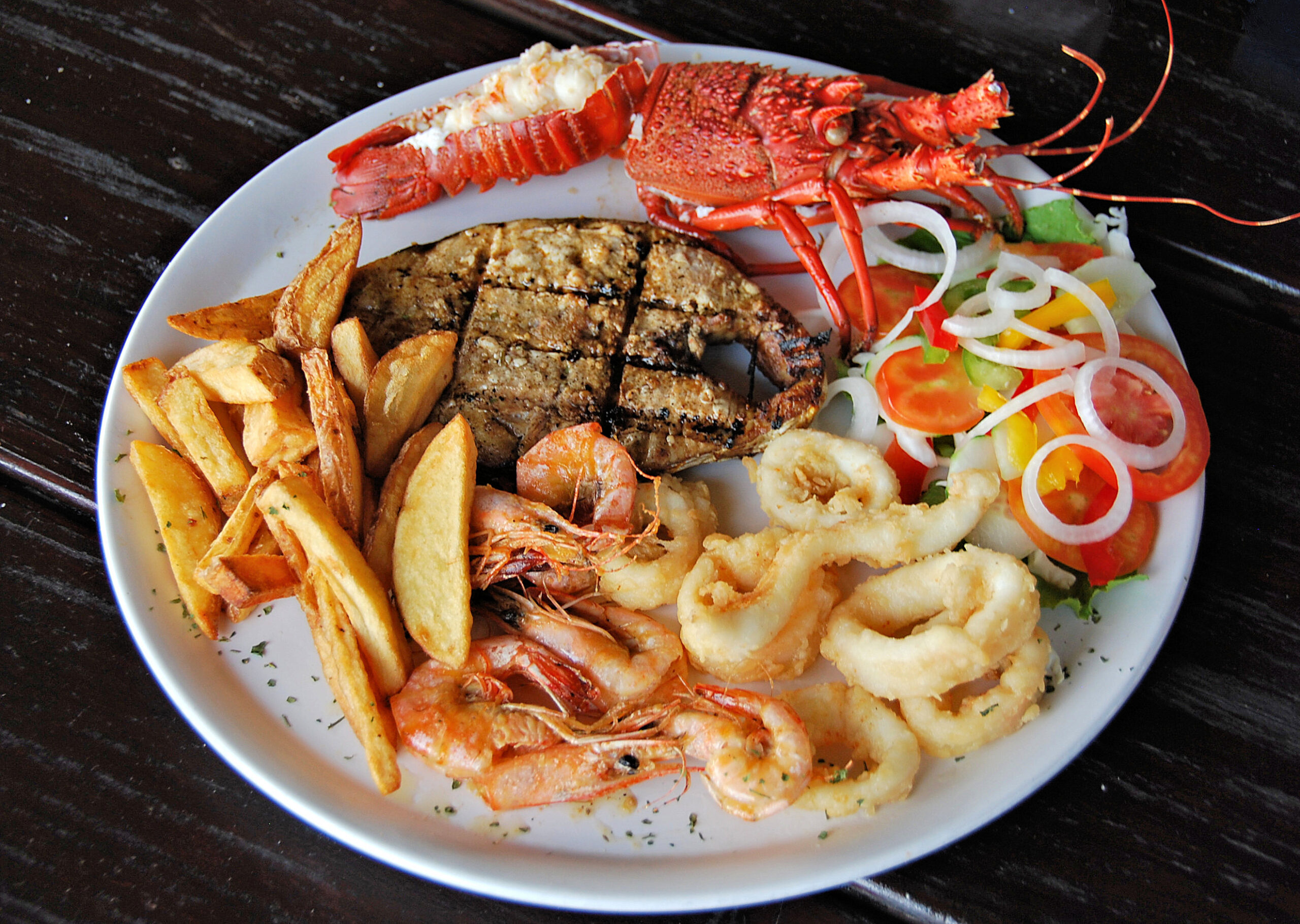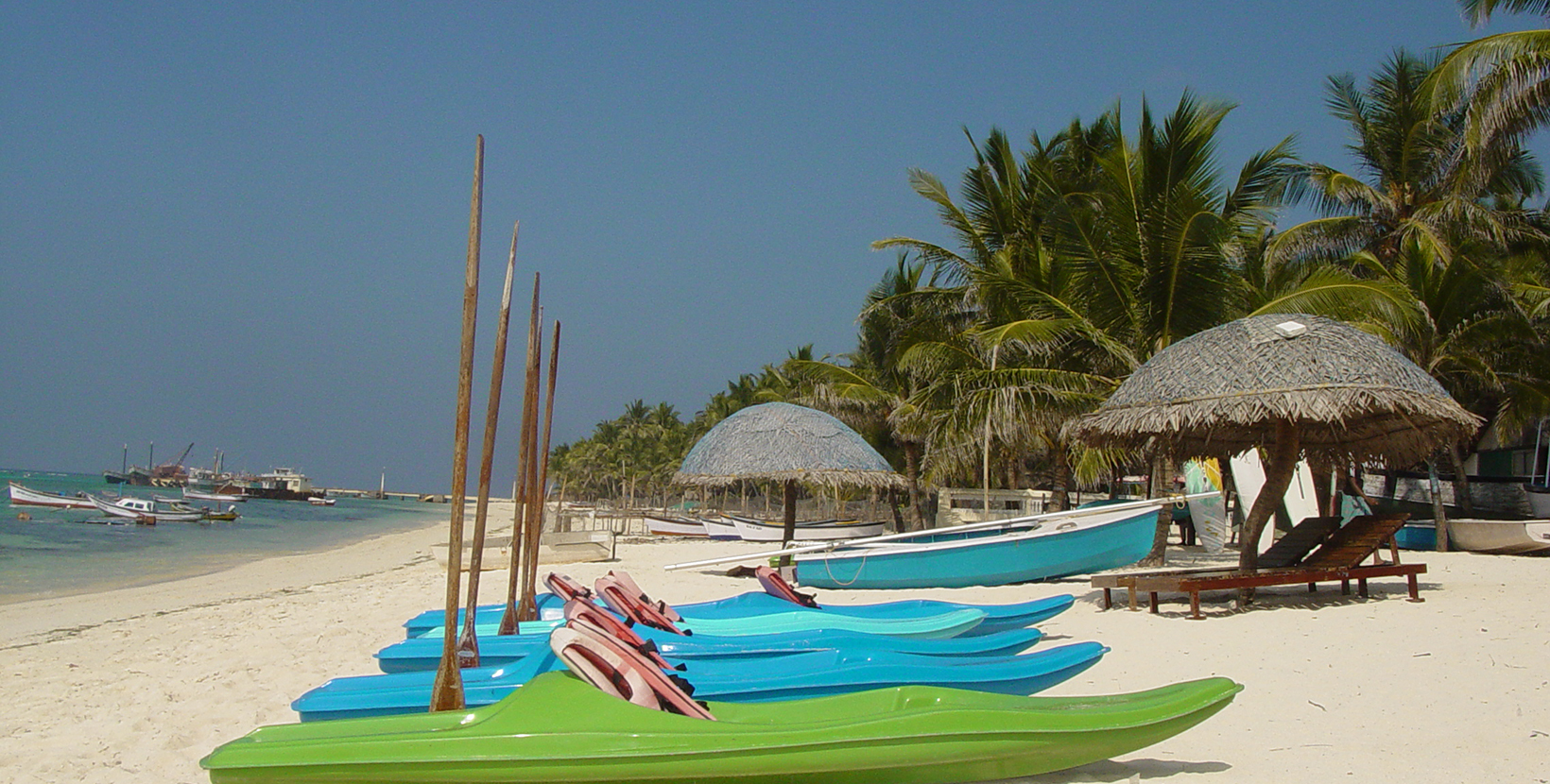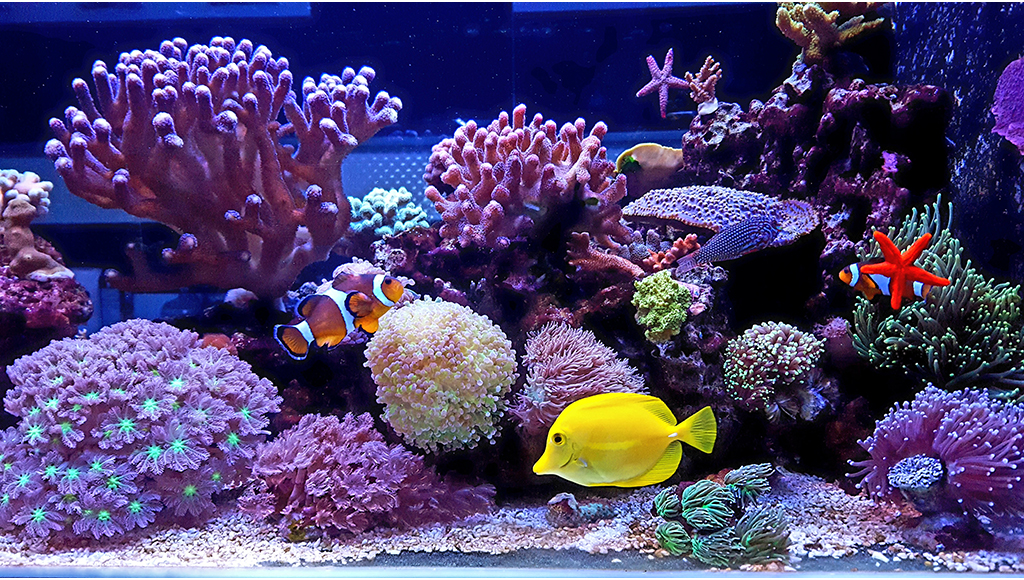

Lakshadweep, India's smallest Union Territory, is a breathtaking archipelago of 36 coral islands in the Arabian Sea. Known for its stunning natural beauty, the islands are characterized by pristine white sand beaches, crystal-clear turquoise lagoons, and vibrant coral reefs teeming with marine life. With only 10 inhabited islands, Lakshadweep offers a tranquil escape from the mainland. The territory is home to a unique culture that blends influences from Kerala, Arabia, and local traditions. From the capital Kavaratti to the picturesque Bangaram Island, and from traditional Kolkali dances to the unique cuisine, Lakshadweep presents a fascinating blend of natural splendor and cultural richness that makes it one of India's most exclusive destinations.

Lakshadweep stands as a testament to the unique maritime heritage and island civilization of India. The archipelago's history dates back to ancient times, with references found in historical texts and travel accounts. The name "Lakshadweep" means "Hundred Thousand Islands," though the territory actually consists of 36 islands. These coral atolls have been inhabited for centuries, with evidence of human settlement dating back to the first millennium.
The islands were ruled by various local chieftains and later came under the influence of the Cheras of Kerala. Islam was introduced to the islands around the 7th century, and the population gradually converted to the faith. The islands maintained their unique identity while developing strong cultural and trade links with the Malabar coast. The Arakkal Kingdom of Cannanore exerted influence over the islands before they came under British protection in the 19th century.
Lakshadweep has a rich tradition of seafaring, fishing, and coconut cultivation. The traditional navigation skills of the islanders, known as "Moappila," are renowned. The territory is also known for its unique boat-building techniques, particularly the construction of "Odams" - traditional sailing vessels. The traditional dance forms, music, and handicrafts reflect the islanders' deep connection with the sea and their environment.
After India gained independence, Lakshadweep became a Union Territory in 1956. The territory has since developed while preserving its unique ecological and cultural heritage. The limited access to the islands has helped maintain their pristine environment and traditional way of life.
The cultural legacy of Lakshadweep is rich and distinctive, with strong traditions in music, dance, crafts, and cuisine. The territory is famous for its traditional dance forms like Kolkali and Parichakali, its unique musical traditions, and its exquisite handicrafts made from coconut shells, seashells, and coral. The traditional knowledge of navigation, fishing, and coconut cultivation has been preserved through generations.
Today, Lakshadweep takes immense pride in this heritage of ecological richness and cultural uniqueness. The territory's special status represents the recognition of its fragile ecosystem and distinct identity within the Indian Union. The values of environmental conservation, community living, and sustainable development established by traditional practices continue to shape Lakshadweep's identity in the modern era.
The legacy of Lakshadweep's island civilization is not just historical; it continues to inspire contemporary Lakshadweep identity. The traditional knowledge systems related to navigation, fishing, and environmental management offer valuable resources for sustainable development in the modern context. The territory's commitment to ecological preservation makes it a model for sustainable tourism and development.
Lakshadweep is known for its unique linguistic heritage, reflecting its geographical isolation and cultural connections with the Malabar coast. The territory's language landscape showcases its position as an island society with strong cultural links to Kerala while maintaining its distinct identity. The linguistic pattern represents the region's cultural synthesis and maritime heritage.
Malayalam is the official language of Lakshadweep and serves as the primary language for administration, education, and inter-island communication. It is the mother tongue of the majority of the population and has been influenced by the territory's unique island environment.
The languages of Lakshadweep reflect its unique cultural identity as an island territory with strong connections to Kerala. While Malayalam serves as the administrative language and lingua franca, the local dialects and Mahl language showcase the territory's diverse linguistic heritage. This linguistic richness truly mirrors Lakshadweep's spirit of cultural preservation while maintaining connections with the mainland, embodying the territory's unique position as India's coral paradise in the Arabian Sea.
Lakshadweep is a territory where Islamic festivals, traditional observances, and celebrations of island life coexist in perfect harmony. The festivals here reflect the territory's deep connection with the sea, religious faith, and community bonds, creating a vibrant tapestry of celebrations throughout the year that showcase Lakshadweep's unique identity as an island society where faith and tradition thrive in a pristine natural environment.
Eid-ul-Fitr is the most important festival of Lakshadweep, celebrated with great enthusiasm across all islands. This festival marks the end of Ramadan, the holy month of fasting. Eid-ul-Fitr celebrates spiritual renewal, community bonding, and gratitude. The festival reflects the deep Islamic faith of the islanders and their joyous spirit of celebration.

Eid-ul-Fitr is not just a religious festival but a celebration of Lakshadweep's cultural identity and community spirit. It brings together islanders in a grand display of faith and joyous celebration. The festival's unique blend of Islamic traditions and island customs makes it the true essence of Lakshadweep's spirit as a society that honors its faith while celebrating its unique island heritage.
Eid-ul-Adha is another major Islamic festival celebrated with great devotion in Lakshadweep. This festival commemorates the willingness of Prophet Ibrahim to sacrifice his son as an act of obedience to God. Eid-ul-Adha, which literally means "Festival of Sacrifice," reflects the deep religious faith and community values of the islanders, particularly emphasizing sacrifice, sharing, and devotion.

In conclusion, Eid-ul-Adha is not just a religious observance but a magnificent display of Lakshadweep's faith, community values, and cultural traditions. It brings together families and communities in a celebration that has been preserved for generations, showcasing the unique social fabric of the islands and their people's deep connection with religious traditions and community sharing.
Eid-ul-Adha is more than a religious festival; it is a living tradition that showcases the unique values of Lakshadweep's island society. As one of the most important festivals in the territory, it represents the islanders' commitment to preserving their religious traditions while maintaining strong community bonds. The festival stands as a testament to the rich cultural heritage that makes Lakshadweep unique among Indian territories.
Milad-un-Nabi is celebrated with great reverence in Lakshadweep to mark the birthday of Prophet Muhammad. This festival showcases the deep devotion of the islanders to their faith and their respect for Islamic traditions. Milad-un-Nabi celebrations in Lakshadweep reflect the territory's Islamic identity while incorporating local cultural elements.
Milad-un-Nabi in Lakshadweep is not just a religious observance but a reaffirmation of faith and community values. From the religious gatherings to the community feasts, every aspect reflects Lakshadweep's identity as a society that values its religious traditions while maintaining its unique island character. The festival's unique blend of religious significance and community bonding makes it an essential part of Lakshadweep's cultural calendar.
The festivals of Lakshadweep showcase its deep Islamic faith, maritime heritage, and strong community bonds. From the joyous celebrations of Eid to the solemn observances of Muharram, and from religious gatherings to traditional boat races, every festival reflects the territory's spirit of faith and community. This harmonious blend of religious observance and island traditions makes Lakshadweep a unique example of cultural richness in India, where faith and island life blend seamlessly, and where religious traditions create a vibrant cultural mosaic that is distinctly Lakshadweep.

Lakshadweep, India's smallest Union Territory, boasts islands that beautifully blend natural beauty with cultural heritage. Its inhabited islands are not only residential areas but also custodians of Lakshadweep's unique identity, where traditional island life coexists with modern amenities. Each island plays a distinctive role in shaping Lakshadweep's character and pride, reflecting the territory's journey from isolated islands to a developed Union Territory while preserving its ecological wealth.
Kavaratti, the capital of Lakshadweep, serves as the political, administrative, and cultural heart of the territory. Located in the central part of the archipelago, this developed island has been the center of Lakshadweep's administration for decades. Kavaratti beautifully balances its role as a territorial capital with preservation of natural beauty, making it one of India's most important island capitals and the face of modern Lakshadweep.


The Ujra Mosque in Kavaratti is one of the most important religious and architectural landmarks in Lakshadweep. This magnificent mosque showcases the rich cultural, religious, and artistic heritage of the islands, providing visitors with a comprehensive understanding of the territory's Islamic traditions and craftsmanship.

The mosque features exquisite wood carvings, traditional Islamic architecture, and beautiful artwork. The most significant features include the intricately carved mihrab (prayer niche), the minbar (pulpit), and the beautiful calligraphy that adorns the walls. The mosque also features a peaceful courtyard and facilities for religious ceremonies and community gatherings.
Ujra Mosque is not just a religious site but also an important cultural institution. The mosque is closely associated with the religious life of the community and serves as a center for Islamic education. The mosque's role in preserving and promoting Islamic arts and culture makes it a vital institution for cultural preservation.
The mosque complex is located in the heart of Kavaratti and is surrounded by well-maintained gardens. The peaceful environment and beautiful architecture make it a popular place for both worship and contemplation. The mosque also serves as an important venue for religious events and festivals.
Today, Ujra Mosque stands as a symbol of Lakshadweep's religious heritage and cultural pride. It represents the vision of the island community in creating a place of worship that reflected their faith, culture, and artistic traditions, while serving as a center of religious and community life for generations.
In conclusion, Ujra Mosque is much more than a religious building—it is a living repository of Lakshadweep's soul, telling the story of the islands and their people through its architecture and religious significance, and serving as a bridge between the past and future of this unique territory.

Kavaratti Beach is one of the most beautiful beaches in Lakshadweep, famous for its pristine white sand and crystal-clear turquoise waters. This magnificent beach represents Lakshadweep's natural beauty and ecological significance, while also serving as an important recreational space for residents and a major attraction for tourists.
The beach features powdery white sand, calm turquoise waters, and lush coconut palms lining the shore. The most remarkable feature is the stunning lagoon that provides safe swimming conditions and opportunities for various water sports. The beach is also known for its beautiful sunsets and the peaceful atmosphere that characterizes island life.
Kavaratti Beach is not just a natural wonder but also an important social space for the island community. The beach supports various recreational activities and is a popular gathering place for families, especially in the evenings. The traditional relationship between the islanders and the sea represents a sustainable model of human-nature interaction.
The beach's location near the main settlement makes it easily accessible while providing a natural retreat from daily life. The well-maintained pathways, seating areas, and the nearby Marine Aquarium ensure a comfortable and educational experience for visitors. The beach also features facilities for water sports and swimming.
In conclusion, Kavaratti Beach is more than just a beach—it is a testament to Lakshadweep's natural wealth and ecological diversity. It represents the territory's commitment to environmental conservation and sustainable tourism, while providing both recreational benefits and livelihood opportunities for local communities.

The Marine Aquarium in Kavaratti is an important educational and conservation facility that showcases the rich marine biodiversity of Lakshadweep. This well-maintained aquarium represents the territory's commitment to marine conservation and environmental education, while serving as a major attraction for visitors interested in the underwater world.
The aquarium features numerous tanks displaying various marine species found in Lakshadweep's waters, including colorful coral reef fish, sharks, rays, and other marine creatures. The most significant exhibits include the coral reef ecosystem display and the sections dedicated to different marine habitats found around the islands. The aquarium also features educational displays about marine conservation.
The Marine Aquarium is not just a tourist attraction but also an important educational institution. The facility conducts educational programs, workshops, and awareness campaigns that help promote understanding and appreciation of Lakshadweep's marine biodiversity. The research and conservation efforts make it a vital institution for marine preservation.
From an environmental perspective, the Marine Aquarium represents Lakshadweep's commitment to protecting its fragile marine ecosystem. The facility stands as a testament to the importance of marine conservation in a territory where the sea is central to life and livelihood.
In conclusion, the Marine Aquarium is not just a collection of marine life but a vital educational and conservation landmark that enhances Kavaratti's environmental and educational landscape. It represents the island's commitment to preserving its marine heritage while serving as a center for environmental education and awareness.
The Water Sports Complex in Kavaratti is a modern facility offering various water sports and recreational activities for visitors. This well-equipped complex represents Lakshadweep's growing tourism infrastructure and its potential for adventure tourism, while providing safe and organized water-based activities for tourists and locals alike.
The complex offers activities such as snorkeling, scuba diving, kayaking, glass-bottom boat rides, and other water sports. The most popular activities include snorkeling in the coral reefs and scuba diving to explore the underwater world. The complex also features equipment rental, trained instructors, and safety facilities to ensure a enjoyable experience for visitors.
The Water Sports Complex is not just a recreational facility but also an important economic institution. The complex provides employment opportunities for local youth and supports the growing tourism industry. The professional management and safety standards make it a model for sustainable tourism development.
The complex building itself is designed to blend with the natural environment, using local materials and architectural styles. The surrounding area and the beautiful lagoon make it a perfect location for water-based activities.
Today, the Water Sports Complex stands as a symbol of Lakshadweep's potential for sustainable tourism development. It represents the vision of creating facilities that would allow visitors to experience the territory's natural beauty while supporting local livelihoods and environmental conservation.
In conclusion, the Water Sports Complex is more than just a recreational facility—it is a living example of how tourism development can benefit both visitors and local communities while preserving the natural environment. It serves as a constant reminder of the recreational opportunities that define Lakshadweep's appeal and inspires sustainable approaches to tourism development.
The local markets in Kavaratti are vibrant spaces where islanders buy and sell local products, handicrafts, and daily necessities. These markets represent the commercial life of the island and the entrepreneurial spirit of its people, showcasing their connection with the sea and their craftsmanship. The markets are not just commercial spaces but social institutions that reflect the communal aspects of island society.
The markets feature numerous stalls selling a wide variety of goods including fresh seafood, local handicrafts, coconut products, textiles, and household items. What makes these markets unique is the strong sense of community and the traditional trading practices that have been preserved. The markets have a long history and have become central to daily life in Kavaratti.
The local markets are not just economic institutions but also important social spaces where people gather, share news, and maintain community bonds. The markets serve as centers for social interaction and cultural exchange. The vendors are known for their knowledge of local products and their role in preserving traditional crafts and trading practices.
From a cultural perspective, the local markets represent the unique economic life of Lakshadweep, where traditional products and modern goods coexist. The markets have adapted to changing times while maintaining their essential character as community gathering places.
In conclusion, the local markets are more than just commercial spaces—they are symbols of community life and economic activity in Lakshadweep. They represent the understanding that economic development and community values can go hand in hand, creating a model of commerce that benefits both the economy and the community while preserving traditional practices.
Kavaratti is more than just a capital island — it is the dynamic heart of Lakshadweep where natural beauty meets modern development, and where traditional values coexist with contemporary aspirations. From its religious landmarks to its modern infrastructure, from its cultural institutions to its growing economy, Kavaratti represents the perfect blend of tradition and progress. Truly, Kavaratti embodies the spirit of Lakshadweep as it moves confidently into the future while honoring its rich natural and cultural heritage, serving as a model for balanced development in island territories.
Agatti, located in the western part of Lakshadweep, is an important gateway and tourism center. This beautiful island serves as the main air gateway to Lakshadweep with its airport, and is known for its stunning lagoon, water sports, and growing tourism infrastructure. Agatti represents the tourism potential of Lakshadweep and its connection with the mainland while maintaining its natural beauty.
Agatti is not just a gateway island but also a symbol of Lakshadweep's tourism development and economic diversification. With its stunning natural beauty, growing tourism infrastructure, and traditional charm, Agatti rightfully earns its place as an important island in Lakshadweep, making it a proud representative of the territory's tourism capabilities and its journey from isolated islands to connected destinations.
Bangaram, located near Agatti, is an uninhabited island that has been developed as a luxury tourist resort. This beautiful island is known for its pristine beaches, stunning lagoon, and exclusive tourism facilities. Bangaram represents Lakshadweep's potential for high-end tourism and its commitment to sustainable development in ecologically sensitive areas.
Bangaram stands as a symbol of Lakshadweep's natural beauty and tourism potential. From the exclusive resort to the pristine environment, and from the limited development to the focus on sustainability, the island reflects Lakshadweep's approach to tourism development that respects ecological limits. Its role as a luxury tourism destination makes Bangaram an essential component of Lakshadweep's tourism landscape and a model for sustainable development.
The islands of Lakshadweep reflect the diverse character and multiple dimensions of the territory. While Kavaratti showcases governance and cultural heritage, Agatti represents connectivity and tourism development, and Bangaram demonstrates luxury tourism and ecological preservation. Together, these islands present a comprehensive picture of Lakshadweep's journey from isolated islands to a developed Union Territory, balancing economic development with environmental conservation, tourism growth with cultural preservation, and local identity with connectivity to the mainland.
The fashion of Lakshadweep is a beautiful reflection of its island culture, Islamic traditions, and tropical environment. Clothing in the territory represents a practical adaptation to the island climate while maintaining religious and cultural values. From traditional attire worn during festivals and religious occasions to everyday practical wear suited for the tropical climate and fishing activities, Lakshadweep's clothing scene offers a fascinating glimpse into the territory's cultural identity and social norms, showcasing how tradition and practicality coexist in this island society.
Lakshadweep women's traditional attire is a modest yet elegant display of cultural identity, religious values, and practical adaptation to island life. From the everyday wear of island women to more elaborate outfits for special occasions, Lakshadweep's female fashion showcases the territory's Islamic heritage while incorporating practical elements suited to the tropical environment. These outfits are worn with cultural pride during festivals, weddings, and religious ceremonies, representing the territory's living cultural heritage.

Traditional women's fashion in Lakshadweep is a beautiful expression of cultural identity, religious values, and practical adaptation. From the modest dresses to the simple jewelry, and from everyday wear to special occasion attire, Lakshadweep's female fashion continues to reflect the territory's unique blend of Islamic traditions and island life. It represents not just clothing but a comprehensive system of cultural expression that connects women to their heritage, faith, and community, while adapting to the practical needs of island living.
Lakshadweep men's traditional attire reflects the territory's Islamic culture, tropical environment, and practical needs for fishing and other activities. The clothing varies from simple functional wear for daily work to more formal outfits for religious occasions and festivals. Even in modern times, traditional attire is commonly worn, showcasing Lakshadweep's cultural continuity and the practical wisdom embedded in traditional clothing designs.

Traditional men's fashion in Lakshadweep is a practical and culturally significant aspect of island life. From the simple mundu and shirt for daily wear to more formal attire for religious occasions, each element tells the story of Lakshadweep's cultural heritage and practical adaptation to island living. The clothing demonstrates how traditional styles have evolved to meet changing needs while preserving their cultural essence and practical value in the island environment.
Lakshadweep's clothing is deeply influenced by practical considerations related to the island environment and traditional occupations. The territory's fashion showcases adaptations for fishing, coconut cultivation, and other activities that are central to island life. From specialized clothing for fishing to practical wear for daily work, Lakshadweep's occupational fashion reflects the territory's connection with the sea and the land, representing a living tradition that continues to evolve while maintaining its practical roots.
Lakshadweep's practical and occupational fashion is a living heritage of adaptation, functionality, and cultural identity. From the specialized clothing for fishing to the practical wear for daily activities, these garments not only clothe the people but also tell the story of Lakshadweep's relationship with its environment, its traditional occupations, and its cultural values. They represent the territory's practical wisdom and its ability to maintain cultural traditions while adapting to the needs of island life in a changing world.
While Lakshadweep is deeply rooted in traditional attire, modern fashion has made some inroads, especially among the younger generation and in more developed areas like Kavaratti. Today, people creatively blend Western clothing, contemporary Indian styles, and traditional elements to create a fashion identity that respects cultural values while embracing change. Lakshadweep's fashion scene reflects its evolving society, youth aspirations, and connections with the mainland while maintaining strong cultural and religious roots.
Modern fashion in Lakshadweep represents a careful balance between tradition and change. While island youth explore new expressions and styles, religious events and cultural occasions still honor Lakshadweep's heritage through traditional wear. This thoughtful combination of old and new makes Lakshadweep's fashion scene evolving yet rooted, where clothing becomes a medium of cultural expression, personal identity, and connection with the wider world, reflecting the territory's journey from isolated islands to a connected Union Territory with a unique cultural identity.
Lakshadweep's fashion is a beautiful reflection of the territory's island culture, Islamic values, and practical adaptation to the tropical environment. From the modest traditional attire that respects religious norms to practical clothing suited for fishing and island activities, and from traditional styles to modern adaptations, the territory's clothing heritage continues to evolve while maintaining its unique identity. It not only represents the cultural pride of Lakshadweep's community but also demonstrates their ability to adapt and innovate, creating a fashion landscape that honors tradition while embracing practical needs and gradual change, much like the territory itself which balances its rich cultural heritage with development and connections to the mainland.